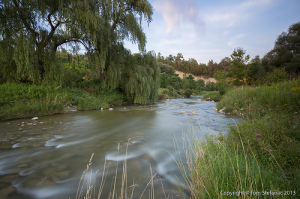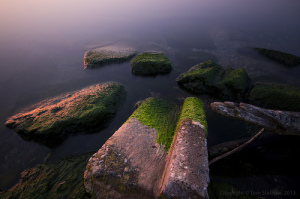Do you ever see those wonderful landscape photos with the bright vibrant colours, the smooth silky water and soft moving clouds?
Well chances are you have and these photos have traditionally been the domain of medium and large format field cameras using a bellows and rear plate which holds a piece of sheet film. The advantage these cameras have is that they can shift and tilt which corrects perspective, they have super small apertures, sometimes as high as F/60 giving an incredible and crisp depth of field. The downside is that that they are big, slow to setup, a tripod is necessary and you really need to know what you’re doing because film isn’t cheap and you won’t know what you have until well after the fact.
That said, in my opinion everything about medium and large format makes it special and often the results are well worth the effort needed!
In today’s digital world, you can simulate large format images but it takes patience and even more time to setup and go through the process than it would with a 4×5 box camera.
The super high apertures associated with medium and large format field cameras have the effect of not only producing super sharp images but also serve to slow down time immensely and what I mean by that is they will require a 1 – 4 second exposure (or longer) even in full daylight. This allows water and clouds to smear into a silky looking surface which is highly desirable.
In order to achieve the same effect with a digital SLR you need neutral density filters and good strong ones. My favourite ND is the B+W ND110 which knocks down light by about 11 f-stops. If you shoot at F/11 with the filter you effectively now have an F/22 setting and this can turn a full daylight exposure that would be 1/500th of a second normally into a 3 or 4 second exposure. This will allow you to get the desired silky effect that has been a staple of medium format landscape images for over a century.
In order to achieve the same level of sharpness, you need to take multiple images at slightly different focal lengths; you’ll need at least 4 images using an F/22 setting and 8 images at F/11 from infinity to maybe 6 meters. You can then import these images into an application like Photoshop and have them automatically aligned and then stacked, this process is called focus stacking because only the sharpest parts of the images will be combined giving a near true infinite depth of field.
Naturally between the filter forcing the camera to require a long exposure and having to take multiple images at different focal lengths you can easily spend five or ten minutes just getting one photo that you still have to process which is longer than you would need with a medium or large format camera.
But at the end of the day, as long as you took the time to frame your scene and had patience your end result will certainly be pleasing if not simply impressive!

